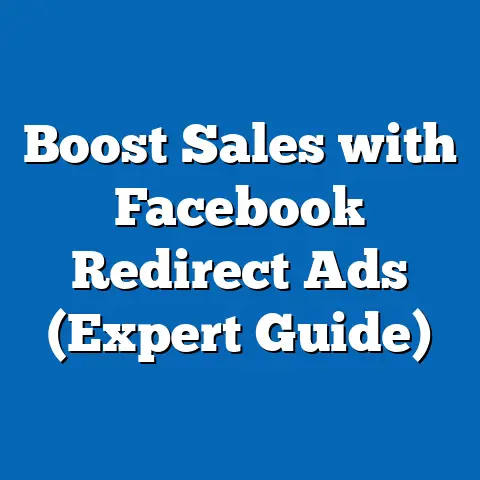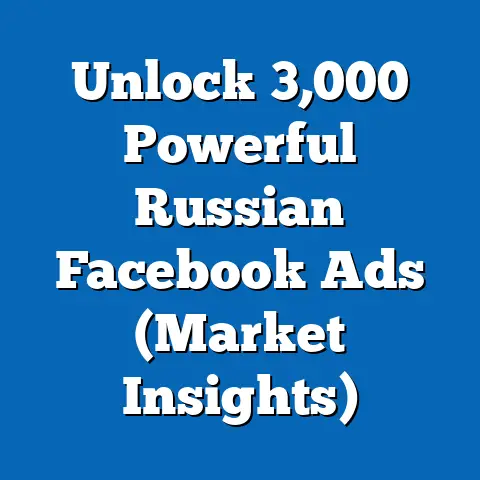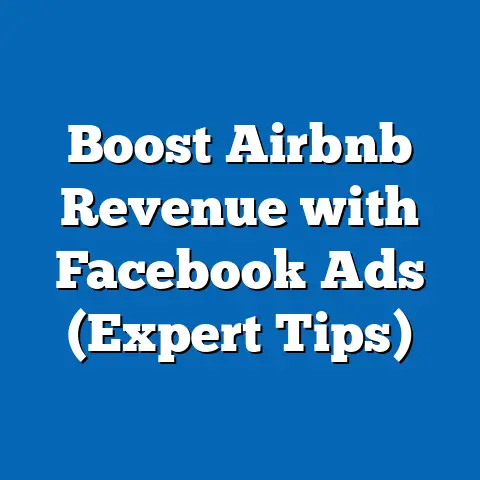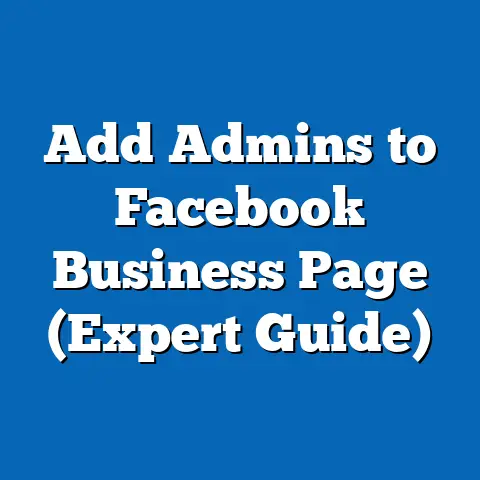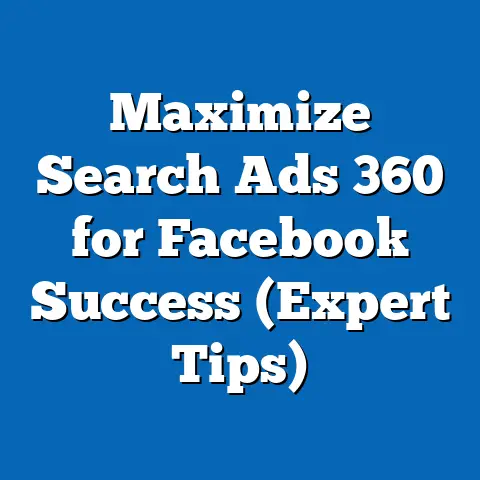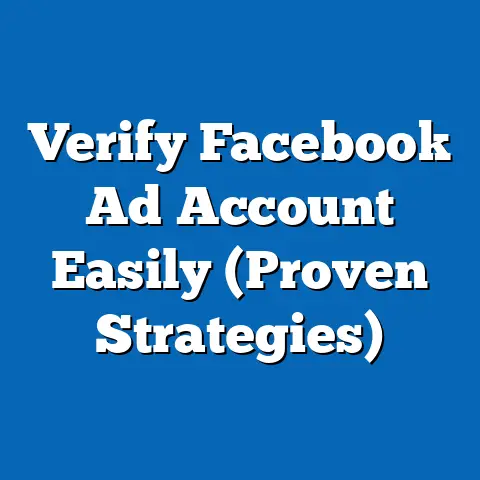Create New Facebook Ads That Convert (Proven Strategies)
Craftsmanship. It’s a word we often associate with woodworking, pottery, or maybe even a perfectly brewed cup of coffee. But what about digital marketing? Specifically, what about Facebook ads? I’ve come to realize that creating truly successful Facebook ads isn’t just about throwing together a catchy image and some persuasive text. It’s an art form, a craft that demands creativity, strategy, and a deep understanding of human psychology.
It’s about crafting ads with intention. Each element – the visuals, the copy, the targeting – plays a crucial role in the overall effectiveness of the advertisement. Think of it like building a house; a strong foundation (audience research) is just as important as the aesthetic appeal (visuals) and the persuasive message (copy).
True craftsmanship in Facebook advertising involves continuous learning, relentless experimentation, and constant refinement. The platform is always evolving, new ad formats emerge, and audience behaviors shift. So, to truly master the art of Facebook ads, you need to be a perpetual student, always eager to learn, adapt, and optimize.
In this guide, I’m going to share some of the proven strategies I’ve used to create Facebook ads that not only grab attention but also drive conversions. We’ll dive into the nitty-gritty of audience research, explore the art of compelling ad copy, discuss the importance of eye-catching visuals, and delve into the world of A/B testing and optimization. Consider this your comprehensive blueprint for crafting Facebook ads that truly convert.
Understanding Your Audience: The Foundation of Success
Imagine trying to sell winter coats to people living in the tropics. Sounds absurd, right? That’s essentially what you’re doing if you’re not taking the time to understand your audience before launching your Facebook ad campaign. Audience research is the bedrock of successful Facebook advertising. It’s about knowing who you’re talking to, what their needs and desires are, and how your product or service can solve their problems.
One of my favorite tools for conducting audience research is Facebook’s own Audience Insights. It’s a goldmine of demographic and behavioral data that can help you paint a vivid picture of your ideal customer.
Leveraging Facebook Audience Insights
Facebook Audience Insights allows you to explore the interests, behaviors, demographics, and even the purchase history of people on Facebook. You can access it through the Ads Manager.
Here’s how I use it:
- Start with a broad audience: I usually begin by selecting a broad audience based on location, age, and gender. This gives me a general overview of the potential market.
- Explore interests: The real magic happens when you start exploring interests. You can enter keywords related to your product or service and see how many people on Facebook are interested in those topics.
- Analyze demographics: Pay close attention to the demographic data, such as age, gender, education level, and relationship status. This information can help you refine your targeting and tailor your ad messaging.
- Examine behaviors: The behaviors section reveals valuable insights into the online activities of your audience, such as their purchase behavior, device usage, and travel habits.
- Page likes: This section shows the top pages that your audience likes. This can give you clues about their interests and preferences.
For example, if I were selling organic skincare products, I might explore interests like “organic skincare,” “natural beauty,” and “eco-friendly living.” I would then analyze the demographic and behavioral data to identify the most promising segments of the audience.
Crafting Detailed Buyer Personas
Once you’ve gathered data from Audience Insights, the next step is to create detailed buyer personas. A buyer persona is a semi-fictional representation of your ideal customer based on research and data about your existing and prospective customers.
When creating a buyer persona, I like to include the following information:
- Name and photo: Give your persona a name and find a stock photo that represents them. This helps to humanize the persona and make them more relatable.
- Demographics: Include their age, gender, location, education level, income, and occupation.
- Goals and motivations: What are they trying to achieve? What motivates them to make a purchase?
- Pain points and challenges: What are their biggest frustrations and challenges? How can your product or service help them overcome these challenges?
- Values and beliefs: What are their core values and beliefs? What’s important to them?
- Online behavior: Where do they spend their time online? What websites and social media platforms do they use?
For example, if I were selling project management software, one of my buyer personas might be “Sarah, the Small Business Owner.” Sarah is a 35-year-old woman who owns a small marketing agency. She’s struggling to manage multiple projects and clients, and she’s looking for a software solution that can help her streamline her workflow and improve team collaboration. Her biggest pain points are missed deadlines, communication breakdowns, and inefficient task management.
Segmenting Your Audience for Targeted Messaging
Once you have your buyer personas, you can start segmenting your audience based on interests, behaviors, and purchase history. Segmentation allows you to tailor your ad messaging to specific groups of people, making your ads more relevant and engaging.
Here are some proven strategies for segmenting your audience:
- Interests: Target people who have expressed interest in specific topics related to your product or service.
- Behaviors: Target people based on their online behavior, such as their purchase history, device usage, and travel habits.
- Demographics: Target people based on their age, gender, location, education level, and income.
- Custom Audiences: Create custom audiences based on your existing customer data, such as email lists and website visitors.
- Lookalike Audiences: Create lookalike audiences based on your custom audiences. This allows you to target people who are similar to your existing customers.
For instance, if I were promoting a new fitness program, I might segment my audience based on interests like “fitness,” “weight loss,” and “healthy eating.” I might also create a custom audience of people who have visited my website and a lookalike audience based on that custom audience.
Understanding Audience Pain Points
One of the most effective ways to create Facebook ads that convert is to understand your audience’s pain points and address them directly in your ad messaging. What are their biggest frustrations, challenges, and unmet needs? How can your product or service solve their problems and make their lives easier?
To identify your audience’s pain points, I recommend conducting surveys, reading online reviews, and monitoring social media conversations. Pay attention to the language they use and the specific problems they describe.
For example, if I were selling a time management app, I might discover that my audience’s biggest pain points are feeling overwhelmed, struggling to prioritize tasks, and missing deadlines. I could then craft ad messaging that speaks directly to these pain points, such as “Stop feeling overwhelmed and start getting things done with our time management app!”
Takeaway: Audience research is the foundation of successful Facebook advertising. By understanding your audience’s demographics, interests, behaviors, and pain points, you can create targeted ad messaging that resonates with them and drives conversions.
Crafting Compelling Ad Copy: The Art of Persuasion
Once you’ve identified your target audience, the next step is to craft compelling ad copy that grabs their attention, sparks their interest, ignites their desire, and compels them to take action. Writing effective ad copy is an art form, a delicate balance of persuasion, creativity, and clarity.
Over the years, I’ve found that the AIDA (Attention, Interest, Desire, Action) framework is an invaluable tool for crafting compelling Facebook ads.
The AIDA Framework: A Time-Tested Formula
The AIDA framework is a marketing model that describes the stages a customer goes through during the buying process.
- Attention: Grab the audience’s attention with a captivating headline or visual.
- Interest: Spark their interest by highlighting the benefits of your product or service.
- Desire: Create a desire for your product or service by showcasing its unique features and benefits.
- Action: Prompt them to take action with a clear and compelling call-to-action.
Let’s break down each element of the AIDA framework in more detail:
- Attention-Grabbing Headlines: Your headline is the first thing people see, so it needs to be attention-grabbing and relevant to your target audience. Use strong verbs, numbers, and intriguing questions to pique their curiosity. For example, “Discover the Secret to Effortless Weight Loss” or “5 Proven Strategies to Boost Your Productivity.”
- Engaging Body Copy: Your body copy should build on the headline and provide more details about your product or service. Focus on the benefits, not just the features. Explain how your product or service can solve their problems and make their lives easier. Use clear and concise language, and avoid jargon.
- Strong Call-to-Action (CTA): Your call-to-action is the final nudge that prompts people to take action. Use strong and specific language, and make it clear what you want them to do. For example, “Shop Now,” “Learn More,” “Sign Up Today,” or “Get Your Free Trial.”
Tips for Writing Attention-Grabbing Headlines
Your headline is the gateway to your ad. If it doesn’t grab attention, people will simply scroll past it without giving it a second thought.
Here are some tips for writing attention-grabbing headlines:
- Use strong verbs: Verbs like “discover,” “unlock,” “transform,” and “achieve” are more compelling than passive verbs.
- Include numbers: Numbers tend to stand out and create a sense of credibility. For example, “7 Proven Ways to Reduce Stress” or “3 Simple Steps to a Healthier You.”
- Ask intriguing questions: Questions can pique people’s curiosity and make them want to learn more. For example, “Are You Tired of Feeling Tired?” or “What’s the Secret to Lasting Happiness?”
- Use emotional language: Emotionally charged words can evoke a strong response and make your headline more memorable. For example, “Experience the Joy of Effortless Cooking” or “Unleash Your Inner Confidence.”
- Keep it short and sweet: Aim for a headline that is concise and easy to understand.
The Power of Storytelling
One of the most effective ways to make your Facebook ads more relatable and memorable is to incorporate storytelling. People are naturally drawn to stories, and they’re more likely to remember a story than a list of facts and features.
When crafting your ad copy, think about how you can tell a story that resonates with your target audience. Share a personal anecdote, a customer testimonial, or a fictional scenario that highlights the benefits of your product or service.
For example, if I were selling a travel backpack, I might tell a story about a customer who used the backpack on a backpacking trip through Southeast Asia. I could describe the challenges they faced, the adventures they experienced, and how the backpack helped them stay organized and comfortable throughout their journey.
Takeaway: Compelling ad copy is essential for driving conversions on Facebook. By using the AIDA framework, writing attention-grabbing headlines, and incorporating storytelling, you can craft ad messaging that resonates with your target audience and compels them to take action.
Designing Eye-Catching Visuals: A Picture is Worth a Thousand Conversions
In the fast-paced world of social media, visuals are king. People are bombarded with information, and they’re more likely to stop scrolling for an eye-catching image or video than a wall of text. Your visuals are the first thing people see, so they need to be visually appealing, relevant to your brand, and aligned with your target audience.
I’ve learned that understanding the principles of good design is crucial for creating visuals that convert.
Principles of Good Design: A Visual Symphony
Good design is more than just aesthetics; it’s about creating a visual experience that is both pleasing and effective. Here are some key principles to keep in mind:
- Color Theory: Colors evoke emotions and associations. Choose colors that align with your brand and resonate with your target audience. For example, blue often conveys trust and stability, while red conveys excitement and energy.
- Balance: Balance refers to the visual weight of elements in your design. A balanced design feels stable and harmonious. You can achieve balance through symmetry or asymmetry.
- Whitespace: Whitespace, also known as negative space, is the empty space around and between elements in your design. Whitespace helps to create a clean and uncluttered look, and it allows the eye to focus on the most important elements.
- Typography: Choose fonts that are easy to read and that align with your brand. Use different font sizes and weights to create visual hierarchy and emphasize key information.
- Imagery: Choose high-quality images and videos that are relevant to your brand and that resonate with your target audience. Avoid using generic stock photos that look staged or unnatural.
Choosing the Right Images and Videos
When choosing images and videos for your Facebook ads, it’s essential to consider your target audience and your brand. What kind of visuals will resonate with them? What kind of visuals will convey your brand’s personality and values?
Here are some tips for choosing the right images and videos:
- Use high-quality visuals: Avoid using blurry, pixelated, or poorly lit images and videos.
- Showcase your product or service in action: Instead of just showing a static image of your product, show it being used in a real-world scenario.
- Use visuals that tell a story: Visuals can be a powerful tool for storytelling. Choose images and videos that evoke emotions and create a connection with your target audience.
- Use visuals that are relevant to your target audience: Consider their interests, values, and lifestyle when choosing visuals.
- Test different visuals: A/B test different images and videos to see which ones perform best.
Branding Consistency: A Visual Identity
Branding consistency is essential for creating a recognizable and trustworthy brand. Your visuals should be consistent with your brand’s colors, fonts, and overall aesthetic.
Use your brand’s logo, colors, and fonts in your Facebook ads to create a consistent visual identity. This will help people recognize your brand and associate it with your products or services.
Tools for Creating Professional-Looking Graphics
You don’t need to be a professional designer to create eye-catching visuals for your Facebook ads. There are many user-friendly tools available that can help you create professional-looking graphics without breaking the bank.
Some of my favorite tools include:
- Canva: Canva is a free online design tool that offers a wide range of templates, images, and fonts. It’s perfect for creating social media graphics, presentations, and other marketing materials.
- Adobe Spark: Adobe Spark is another user-friendly design tool that offers a variety of templates and features. It’s great for creating short videos, animated graphics, and web pages.
- PicMonkey: PicMonkey is a photo editing tool that allows you to enhance your photos, add text and graphics, and create collages.
Takeaway: Eye-catching visuals are crucial for capturing attention and driving conversions on Facebook. By understanding the principles of good design, choosing the right images and videos, and maintaining branding consistency, you can create visuals that resonate with your target audience and help you achieve your advertising goals.
Utilizing Facebook Ad Formats and Features: A Toolbox of Opportunities
Facebook offers a diverse range of ad formats and features that allow you to tailor your advertising campaigns to specific goals and audiences. Understanding these options is essential for maximizing your ROI and achieving your marketing objectives.
Exploring Different Ad Formats
Facebook offers a variety of ad formats, each with its own unique strengths and weaknesses.
- Image Ads: Image ads are the simplest and most common ad format. They consist of a single image and some text. Image ads are great for showcasing your product or service in a visually appealing way.
- Video Ads: Video ads are more engaging than image ads and can be used to tell a story, demonstrate your product, or share a customer testimonial.
- Carousel Ads: Carousel ads allow you to showcase multiple images or videos in a single ad. This format is great for showcasing a range of products, highlighting different features, or telling a story in multiple parts.
- Slideshow Ads: Slideshow ads are similar to video ads, but they’re created using a series of images. Slideshow ads are a great way to create engaging video-like content without the expense of producing a full video.
- Collection Ads: Collection ads are designed for mobile devices and allow you to showcase a collection of products in a visually appealing way. This format is great for e-commerce businesses that want to drive sales on mobile.
Leveraging Facebook’s Dynamic Ads
Facebook’s dynamic ads are a powerful tool for retargeting audiences who have previously interacted with your website or app. Dynamic ads automatically show people the products or services they’ve viewed or added to their cart but haven’t purchased.
To use dynamic ads, you’ll need to set up a Facebook Pixel on your website and create a product catalog. Once you’ve done that, you can create dynamic ads that automatically target people who have shown interest in your products.
I’ve found this to be super effective for retargeting campaigns.
Ad Placement Options: Where Your Ad Appears Matters
Facebook offers a variety of ad placement options, allowing you to choose where your ads appear. You can choose to show your ads on Facebook, Instagram, Audience Network, and Messenger.
When choosing your ad placement options, consider your target audience and your campaign goals. Where are your target customers most likely to see your ads? What ad placement will best achieve your campaign goals?
Takeaway: Facebook offers a wide range of ad formats and features that allow you to tailor your advertising campaigns to specific goals and audiences. By understanding these options and leveraging them effectively, you can maximize your ROI and achieve your marketing objectives.
Testing and Optimization: The Path to Ad Perfection
Creating Facebook ads that convert is an ongoing process of testing and optimization. You need to constantly be experimenting with different ad elements, analyzing your results, and making adjustments to improve your performance.
The Power of A/B Testing
A/B testing, also known as split testing, is the process of comparing two versions of an ad to see which one performs better. You can A/B test different ad elements, such as headlines, images, copy, and audience targeting.
To set up an A/B test, create two versions of your ad with one element changed. Run both ads simultaneously and track their performance. The ad that performs better is the winner.
Key Performance Indicators (KPIs): Measuring Your Success
To effectively optimize your Facebook ads, you need to track key performance indicators (KPIs). KPIs are metrics that measure the success of your advertising campaigns.
Some of the most important KPIs to monitor include:
- Click-Through Rate (CTR): CTR measures the percentage of people who click on your ad after seeing it. A high CTR indicates that your ad is relevant and engaging.
- Conversion Rate: Conversion rate measures the percentage of people who take a desired action after clicking on your ad, such as making a purchase or signing up for a newsletter. A high conversion rate indicates that your ad is effective at driving results.
- Cost Per Click (CPC): CPC measures the cost of each click on your ad. A low CPC indicates that you’re getting good value for your advertising spend.
- Return on Ad Spend (ROAS): ROAS measures the revenue you generate for every dollar you spend on advertising. A high ROAS indicates that your advertising campaigns are profitable.
Iterative Testing: A Cycle of Improvement
Testing and optimization is not a one-time event; it’s an ongoing process. You need to continuously be experimenting with different ad elements, analyzing your results, and making adjustments to improve your performance over time.
Embrace the process of iterative testing and be willing to experiment with new ideas. The more you test, the more you’ll learn about what works and what doesn’t.
Takeaway: Testing and optimization are essential for refining your Facebook ads and achieving optimal performance. By A/B testing different ad elements, tracking key performance indicators, and embracing the process of iterative testing, you can continuously improve your ad performance and drive better results.
Conclusion: The Art and Science of Facebook Advertising
Crafting Facebook ads that convert is a blend of artistry and analytics. It requires a deep understanding of your audience, compelling ad copy, eye-catching visuals, and a relentless commitment to testing and optimization.
Remember, successful Facebook advertising is not about luck; it’s about strategy, creativity, and hard work. By continuously honing your craft and staying updated with the latest trends and updates in Facebook advertising, you can maintain your competitive edge and achieve your marketing goals.
I encourage you to embrace the process of experimentation and to share your experiences and results in the comments or on social media. Let’s learn from each other and continue to push the boundaries of what’s possible with Facebook advertising.
Call to Action:
Now it’s time to take action! Start implementing the strategies discussed in this guide in your next Facebook ad campaign. I am excited to hear about your experiences and results. Share your insights in the comments below or on social media using #FacebookAdCraft. Let’s craft some amazing ads together!

